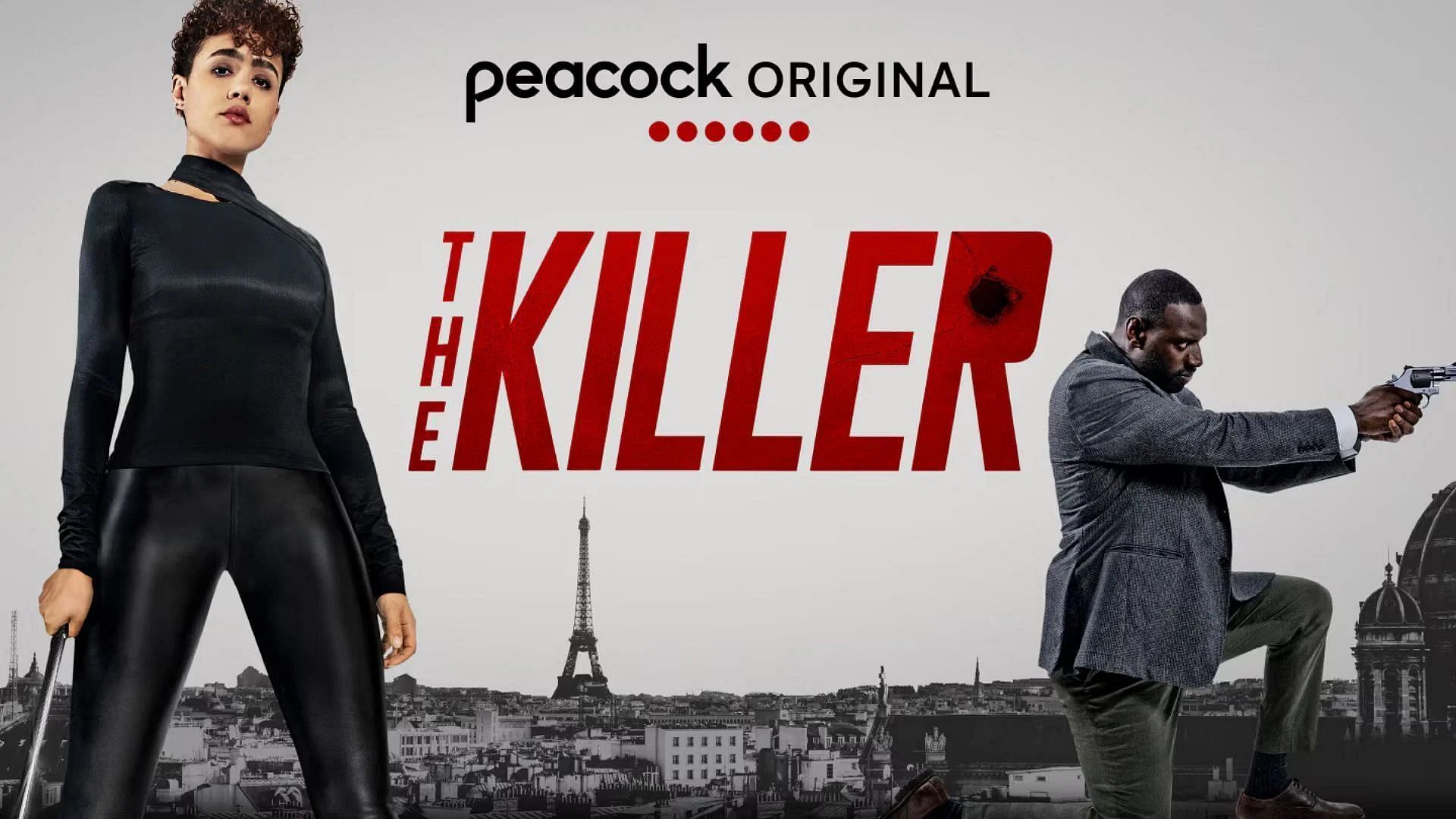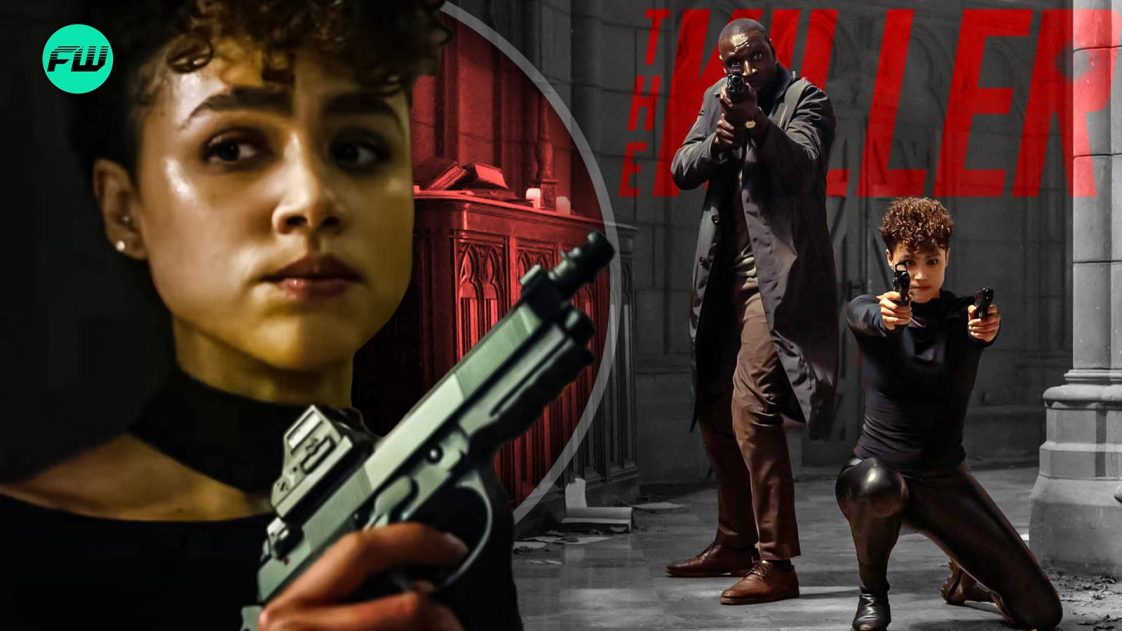John Woo is back. Less than a year after the release of his forgettable Silent Night (which did not receive a cinema release), the Hong Kong filmmaker and master of action returns with a long-held project: to ‘remake’ his 1989 masterpiece. At the age of 78, thirty-five years later, John Woo has finally realized this idea by replacing the male lead played by Chow Yun-Fat with a young woman. This gender inversion was desired by the director himself, who suggested transposing the story to picturesque Paris in the 2020s. It is an explosive mix, and not in a positive sense.
RETURN TO THE WEST
Understanding the shortcomings of this Western remake of The Killer also requires understanding John Woo’s creative process and intentions. It is well-established that John Woo is undeniably the master and sole authority on modern action cinema. He established the foundation for gun-fu in the 1980s, particularly with “A Better Tomorrow,” originally titled “The Syndicate,” featuring intense gunfight choreography similar to martial arts but using firearms—a concept he pioneered in Hong Kong. Other filmmakers such as Tsui Hark, Ringo Lam, Johnnie To, and Wilson Yip later added their distinct styles to this genre. When a formula proves successful, the Americans often capitalize on it with substantial funding. This is how Hollywood attracted John Woo to produce films for American audiences: “Broken Arrow,” “Face/Off,” “Mission Impossible 2,” “Paycheck,” and even “Windtalkers.” His American filmography is not highly regarded by his most dedicated fans. Personally, the only American film I still admire today is “Hard Target” starring Jean-Claude Van Damme. The way it transforms high kicks into realistic gunfire captivates me. It’s an exceptional film that retains John Woo’s electrifying action direction without compromising his expertise, even with American production influence. Compared to “Face/Off,” which has not aged well due in part to Nicolas Cage’s overacting, I find “Hard Target” subtly superior…
INFLUENCE & HERITAGE
To understand John Woo, it is important to recognize that he has a distinct style characteristic of the 1980s and 1990s era, often embodying a certain naivety typical of Asian cinema. This mood and setting work predominantly within an Asian context, whether in Hong Kong, China, South Korea, or Japan, depending on the genre. Translating this somewhat sentimental atmosphere to Western audiences is challenging, if not impossible. If John Wick is now regarded as a benchmark for films involving gunfights, it is crucial to acknowledge that John Woo’s legacy paved the way for stuntmen like Chad Stahelski to become renowned directors in this genre. Indeed, without Hong Kong cinema, which Hollywood has extensively drawn from over decades—The Matrix being a prime example—there would be no John Wick today. I am convinced that John Woo sees it similarly; his films were never aimed at pleasing Western audiences but rather his home country and neighboring regions. He himself admitted to being surprised by the international success of his works and the interest they garnered from producers outside Asia. However, given John Woo’s significant influence, it was American filmmakers who sought out his best ideas. Thus, how could John Woo’s style be adapted with an American twist? This must have been a consideration for the Hong Kong filmmaker when collaborating with American producers. It is necessary to adapt the John Woo formula to cater to Western tastes. Much like Asian restaurants in the early 1980s tailored exotic flavors to suit Western palates, such as the popular Cantonese fried rice with peas and ham. But it’s merely a recipe adjusted for Western preferences…
Now that introductions are complete and the context is established, we come to this remake of “The Killer,” bearing all the hallmarks of John Woo’s 1990s formula, including a sense of naivety, and adapting poorly to Western standards. This is evident throughout the film, starting with its postcard-perfect yet clichéd Paris setting, along with juvenile dialogues penned by Brian Helgeland, known for works such as “LA Confidential,” Clint Eastwood’s “Mystic River,” “Man on Fire,” Ridley Scott’s “Robin Hood,” and even his own directorial work in “Payback.” A big Hollywood name, Helgeland’s credit is prominently displayed on the film’s poster. However, little remains of the 1989 “The Killer” script except for the friend-foe relationship between the cop and the killer, as well as the killer’s passionate obsession with the young woman he left blind after a botched shootout. While I am not overly bothered by the original story being altered, simply copying it is not necessarily interesting and allows for surprises for those familiar with the original work. The issue lies in making so many poor choices in doing so, much like the 2024 version of “The Crow” from Hollywood.
It was decided to set the story in Paris, with a French, even Parisian atmosphere, which is not necessarily a bad idea since John Woo’s 1989 film “The Killer” was heavily inspired by Jean-Pierre Melville’s “Le Samourai.” Chow Yun-Fat was indeed his Alain Delon, and recently, John Woo paid tribute to Alain Delon’s death, explaining that “Le Samouraï” changed his life and his perception of cinema. The idea of making it a mirror to Alain Delon’s Samurai would have been brilliant, but the remake takes on an “Emily in Paris” or “Plus Belle la Vie” light version, not exaggerating much… So, French atmosphere for this remake, with an international cast, but featuring quite a few French actors as well. Omar Sy plays Inspector Li, renamed Sey. Nathalie Emmanuel portrays the hitwoman and replaces Chow Yun-Fat, renamed Zee. Sam Worthington takes on the role of her mentor, Tcheky Karyo is the tailor making three-piece suits, Saïd Taghmaoui plays a Saudi prince, and Eric Cantona is Gobert, the head of French mafia. It is unclear if Eric Cantona himself had the idea to imitate Robert De Niro’s “Did you fuck my wife” scene from Raging Bull, but the result is as ridiculous as it is uncomfortable…
Special mention should also go to Grégory Montel, who plays Omar Sy’s French cohort. His performance seems inconsistent, leading one to believe there may have been a lack of direction during filming. In the film’s original language version, the dialogue switches between French and English, which is confusing. Omar Sy and Grégory Montel are two French cops in Paris who primarily speak French throughout the movie but occasionally switch to English based on the situation. Sometimes this change makes sense when they are accompanied by an Anglo-Saxon colleague, but often it appears arbitrary and serves only to make the American audience more comfortable with foreign languages. We would have preferred John Woo to release his film entirely in English, similar to Ridley Scott’s approach with “Napoleon,” as it would have been less jarring and more consistent overall.
AUTO-PARODY
The charm of “The Killer” from 1989 lay in the class exuded by its actors. As noted, Chow Yun-Fat was akin to an Asian Alain Delon, radiating charm and elegance on screen. This is not the case with this remake, where Nathalie Emmanuel does her best but struggles significantly. While her facial expressions are exaggerated, her performance remains passable compared to others who seem lost in a disjointed adventure. There was no clear direction from John Woo during filming, particularly since he prioritizes action scenes over character development. The result falls short of what the filmmaker achieved at his peak in the 1990s. Returning to familiar tropes, the remake includes all the clichés of Woo’s earlier work, even caricatured versions of them: slow motion sequences, black-clad motorcycle gangsters with face shields, dual guns, forward leaps and slides, Mexican standoffs, and doves—now replaced by a single gray Parisian pigeon. This stark contrast highlights the dated nature of the film. The depiction of enemies falling in slow motion is also present but feels out of place given contemporary expectations. Everything is there from his earlier style, yet with the same naivety as before, suggesting he believes it’s still the 1990s despite being in 2024. Today’s audiences have analyzed and evolved beyond Woo’s art form, making this remake feel obsolete. Whether John Woo has become set in his ways or is simply resistant to change remains unclear; however, his refusal to adapt leaves the film lacking coherence and impact compared to its predecessor.
There are a few brief instances of effective staging, particularly during the hospital shootout and the interrogation scene, but that is where it ends. The rest feels outdated, especially the first action sequence where Omar Sy chases a crook in a red BMW, which is poorly executed. It is poorly shot, filled with obvious continuity errors and inconsistencies, to the point where John Woo does not even attempt his usual finesse. Brian Helgeland, known for scripts such as “L.A. Confidential,” “Mystic River,” and “Man on Fire,” is responsible for the dialogue, but little remains of the original 1989 script except for the complex relationship between cop and killer, and the killer’s obsessive passion for the woman he blinded in a botched shootout.
Have any thoughts?
Share your reaction or leave a quick response — we’d love to hear what you think!



